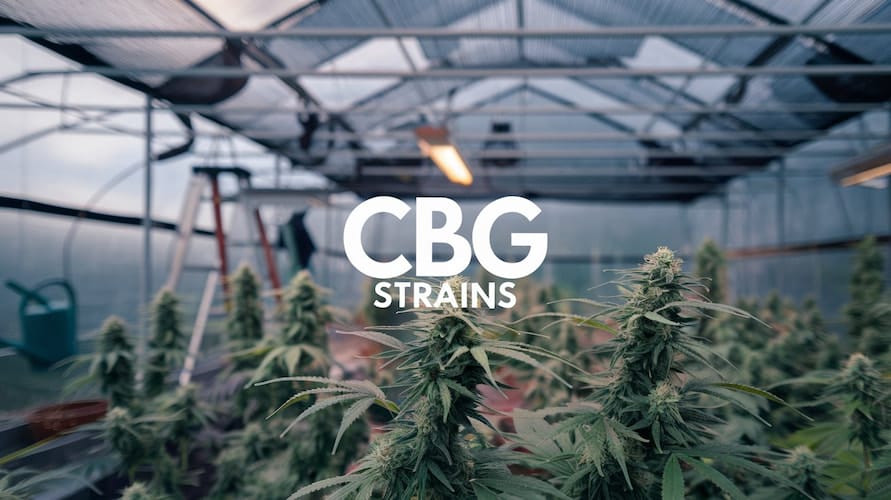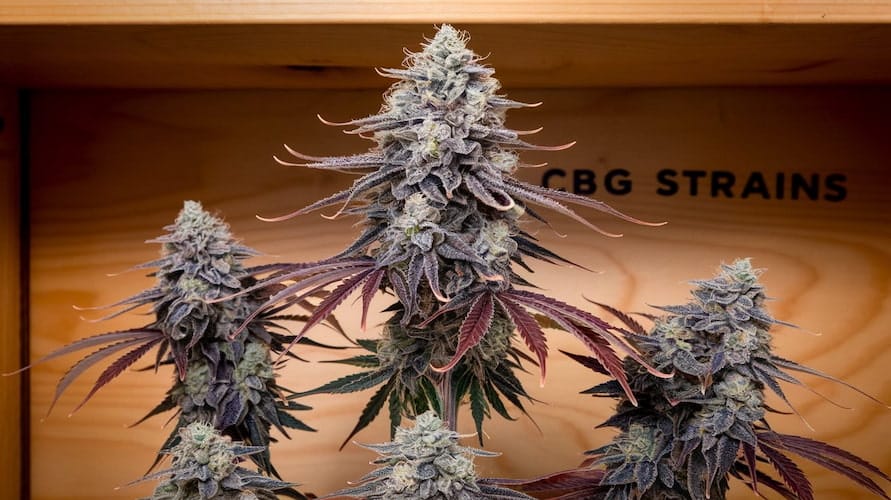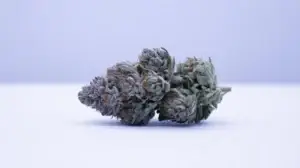Top CBG Strains for Growers: A Seed Comparison Guide

Hey there, I’m James Bean, founder of Seeds Here Now, and today I’m diving into the world of CBG strains. As the cannabis industry evolves, CBG, or cannabigerol, is fast becoming one of the most sought-after cannabinoids, especially for its potential therapeutic benefits and unique properties. But with so many CBG strains on the market, how do you know which one’s right for you? Let’s go over what makes CBG different, what to consider when choosing a strain, and my top picks for growers of all levels.
Introduction to CBG and Its Appeal in Cannabis Cultivation
CBG is often called the “mother of cannabinoids” because THC, CBD, and many other cannabinoids are derived from CBG’s precursor form, CBGA. Unlike THC, CBG doesn’t produce a high, making it ideal for those seeking therapeutic benefits without psychoactive effects. Researchers have discovered that CBG may have potential for anti-inflammatory, neuroprotective, and antibacterial applications, which explains why growers and consumers are so interested in this cannabinoid.
CBG strains are relatively new, but they’re gaining popularity fast, especially among those looking to expand beyond traditional THC and CBD strains. However, growing CBG-rich strains comes with some unique challenges, so it’s essential to choose the right strain based on your goals, experience, and setup.
Factors to Consider When Choosing CBG Seeds
CBG Dominance vs. THC Levels
CBG strains are bred to produce high levels of CBG and low to negligible THC content. This is particularly important if you’re growing in areas with THC restrictions.
Indoor vs. Outdoor Growing
Certain strains thrive better in controlled environments, while others adapt well outdoors. Growing indoors allows you to manage temperature and light more effectively, which can impact CBG production.
Yield Expectations
Since CBG is still emerging in the market, yield expectations can vary. While some CBG strains yield generously, others produce lower quantities, often in favor of a higher cannabinoid concentration.
Growth Difficulty and Maintenance
Some CBG strains are perfect for beginners, while others require specific nutrients, light cycles, and careful attention to detail. Your experience level will help determine the best strain for you.
Legal Considerations
Check your local laws before growing, as CBG-rich strains sometimes fall under different regulations due to their low THC content.
Top CBG Strains for Growers and Their Comparisons
Let’s look at some of the top CBG strains available and compare their characteristics. Each strain has its strengths and unique traits, so there’s something here for every type of grower.
1. White CBG
Overview
White CBG is one of the most popular CBG strains, known for its frost-covered buds and relatively easy growing requirements. This strain was specifically bred to produce high levels of CBG and minimal THC.
Growth Traits
White CBG is a hardy strain that grows well indoors and outdoors. It’s relatively pest-resistant and tends to have a shorter flowering time of around 9-10 weeks.
CBG Content
White CBG boasts an impressive CBG content of around 15-20%.
Pros and Cons
- Pros: High CBG content, manageable growth, resilient.
- Cons: Lower yield compared to THC-dominant strains.
2. Stem Cell CBG
Overview
Stem Cell CBG is a unique strain celebrated for its medicinal potential. Many growers appreciate its unique genetic stability and consistent CBG output.
Growth Traits
Stem Cell CBG is versatile, thriving in both indoor and outdoor setups. It requires moderate maintenance and has a flowering period of about 8-9 weeks.
CBG Content
Typically around 15-18% CBG, making it an ideal choice for medicinal growers.
Pros and Cons
- Pros: High cannabinoid consistency, well-suited for therapeutic use.
- Cons: Requires moderate maintenance; not recommended for complete beginners.
3. Jack Frost CBG
Overview
Jack Frost is a highly adaptable strain and a staple among CBG growers for its resilience and high cannabinoid content. It’s an excellent option for those who want a stable, high-CBG plant with broad adaptability.
Growth Traits
Jack Frost performs well indoors and outdoors, showing resilience to environmental shifts. Its flowering time is approximately 8-10 weeks.
CBG Content
Known for its high CBG levels, often reaching up to 20%.
Pros and Cons
- Pros: High CBG content, resilient, adaptable to various environments.
- Cons: Requires adequate space; outdoor growers may need to monitor for pests.
4. Sour G CBG
Overview
Sour G is known for its aromatic qualities, bringing a pleasantly sour and citrusy profile to the table. This strain has become popular for its unique terpene profile and therapeutic benefits.
Growth Traits
Sour G grows best in a controlled environment but can do well outdoors with some care. It has a slightly longer flowering time, around 10-11 weeks.
CBG Content
Around 15-18% CBG.
Pros and Cons
- Pros: Unique aroma, high CBG levels.
- Cons: Requires controlled environment for optimal growth.
CBG Strains for Different Types of Growers
For Beginners
Recommended Strain: White CBG
White CBG’s resilience and low maintenance make it an excellent choice for beginners who want to get a feel for cultivating CBG strains.
For Medicinal Growers
Recommended Strain: Stem Cell CBG
This strain is perfect for medicinal growers looking to harness CBG’s therapeutic potential. With consistent cannabinoid content, Stem Cell CBG is ideal for crafting reliable, therapeutic products.
For Commercial Growers
Recommended Strain: Jack Frost CBG
Jack Frost’s robust yield and high CBG content make it a solid option for commercial growers aiming for profit and product consistency.
For Small-Scale or Hobbyist Growers
Recommended Strain: Sour G CBG
Sour G’s distinct aroma and moderate growth requirements make it an appealing choice for hobbyists who want quality over quantity and a unique experience.
Tips for Maximizing CBG Yield and Quality
Optimize Growing Conditions
CBG-rich strains prefer stable environments. Keep the temperature between 70-85°F, maintain relative humidity between 40-50%, and ensure plenty of light (18-24 hours during vegetative stages).
Nutrient Management
CBG strains generally respond well to balanced nutrients but require higher phosphorus levels in the flowering stage to enhance bud development.
Harvest Timing
Harvest timing is crucial for preserving CBG levels. Since CBG converts to other cannabinoids as the plant matures, it’s best to harvest a bit earlier than you might with high-THC or high-CBD strains to capture maximum CBG.
Proper Drying and Curing
Dry your CBG buds slowly in a dark, well-ventilated area at around 60°F and 60% humidity to avoid potency loss. Curing for at least 2-3 weeks helps preserve the terpenes and enhance flavor.
Conclusion
Each CBG strain has its own unique strengths, from White CBG’s resilience to Jack Frost’s high yield. For medicinal growers, Stem Cell CBG is unmatched, while Sour G brings a unique aroma and flavor that hobbyists will love. Ultimately, your choice of strain will depend on your specific goals, environment, and experience level.
If you’re ready to start experimenting with CBG-rich strains, Seeds Here Now is here to help you find the perfect genetics. Don’t hesitate to reach out if you need guidance on which strain is right for you. Happy growing, and here’s to exploring the endless possibilities of CBG cultivation!
FAQs
What is the best CBG strain for beginners?
White CBG is an excellent choice for beginners due to its resilience and low maintenance requirements.
Are CBG strains legal to grow in all states?
Legalities vary by region. Check local laws, as some CBG strains fall under hemp regulations due to low THC content.
Do CBG strains require different care than high-THC or high-CBD strains?
Generally, CBG strains have similar needs, though harvesting time is more critical to preserve CBG content.
How long does it take for CBG strains to mature?
CBG strains typically mature within 8-11 weeks, depending on the strain.
What yields can I expect from CBG plants?
Yields vary by strain. Jack Frost, for instance, offers generous yields, while others may prioritize CBG concentration over high yield.
Suggested Articles
;)
;)
;)






 06 Oct 2025
06 Oct 2025  4 min read
4 min read


 December 12, 2024
December 12, 2024 


RESPONSES (0)
No responses yet. Be the first to respond!